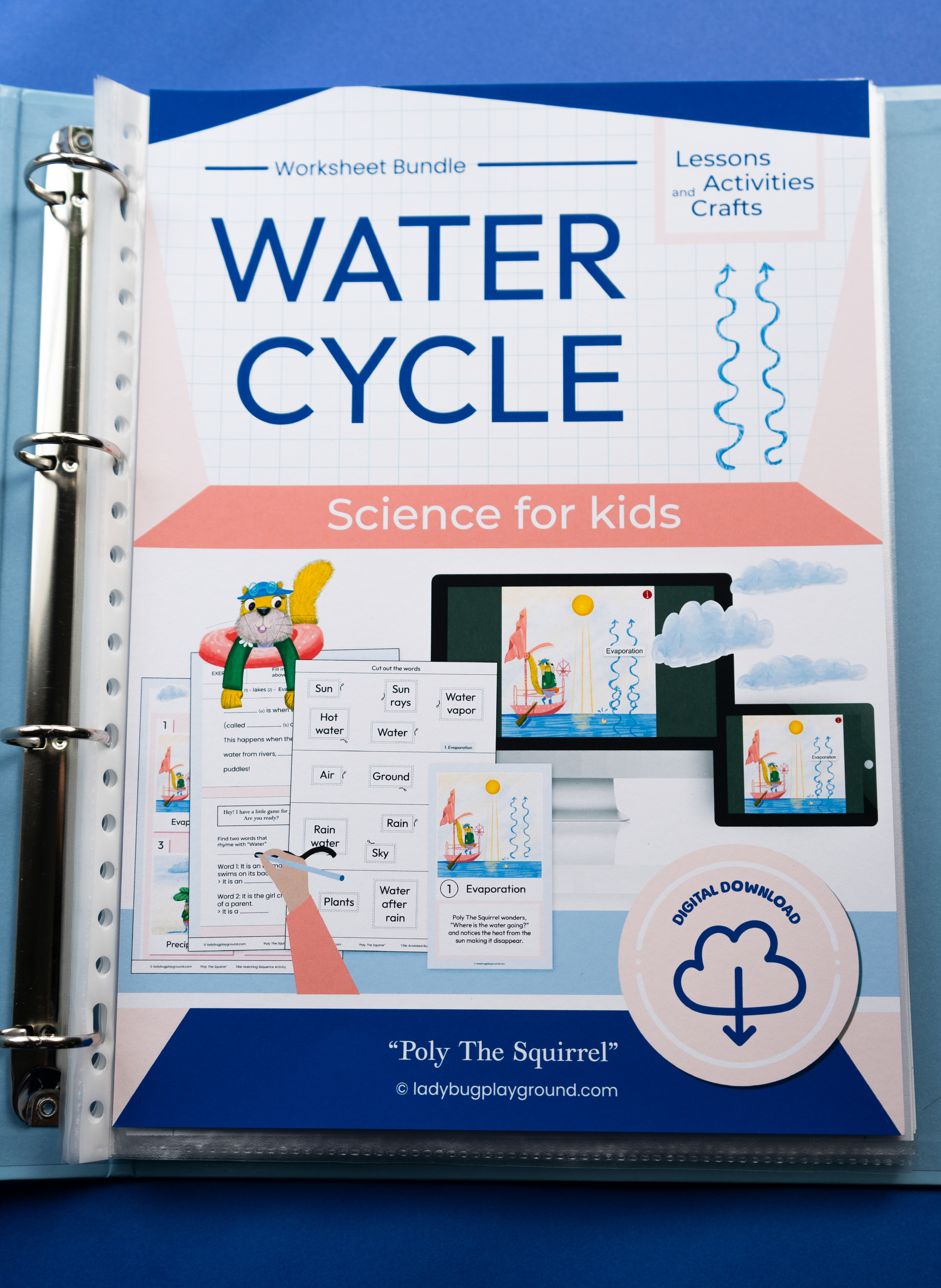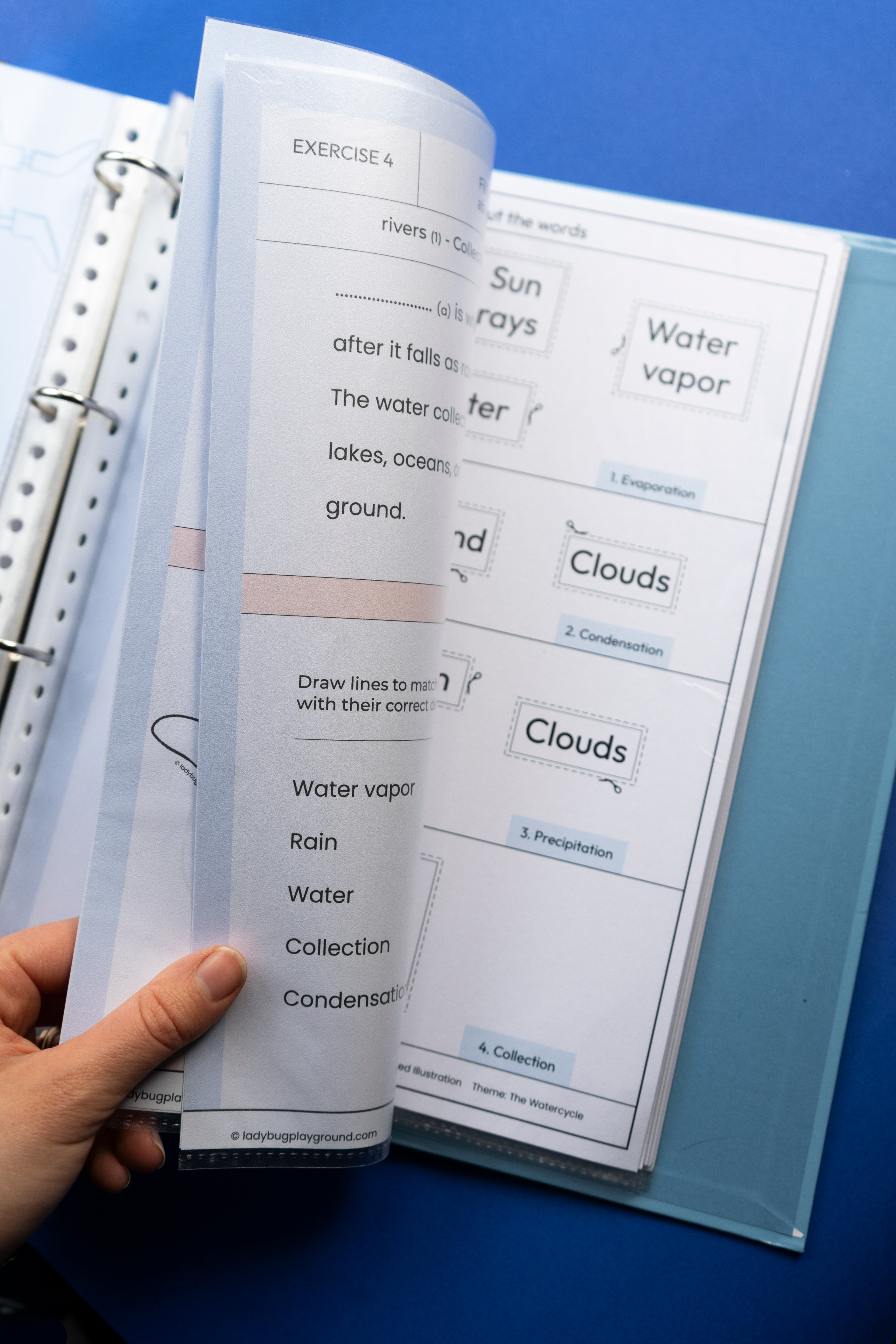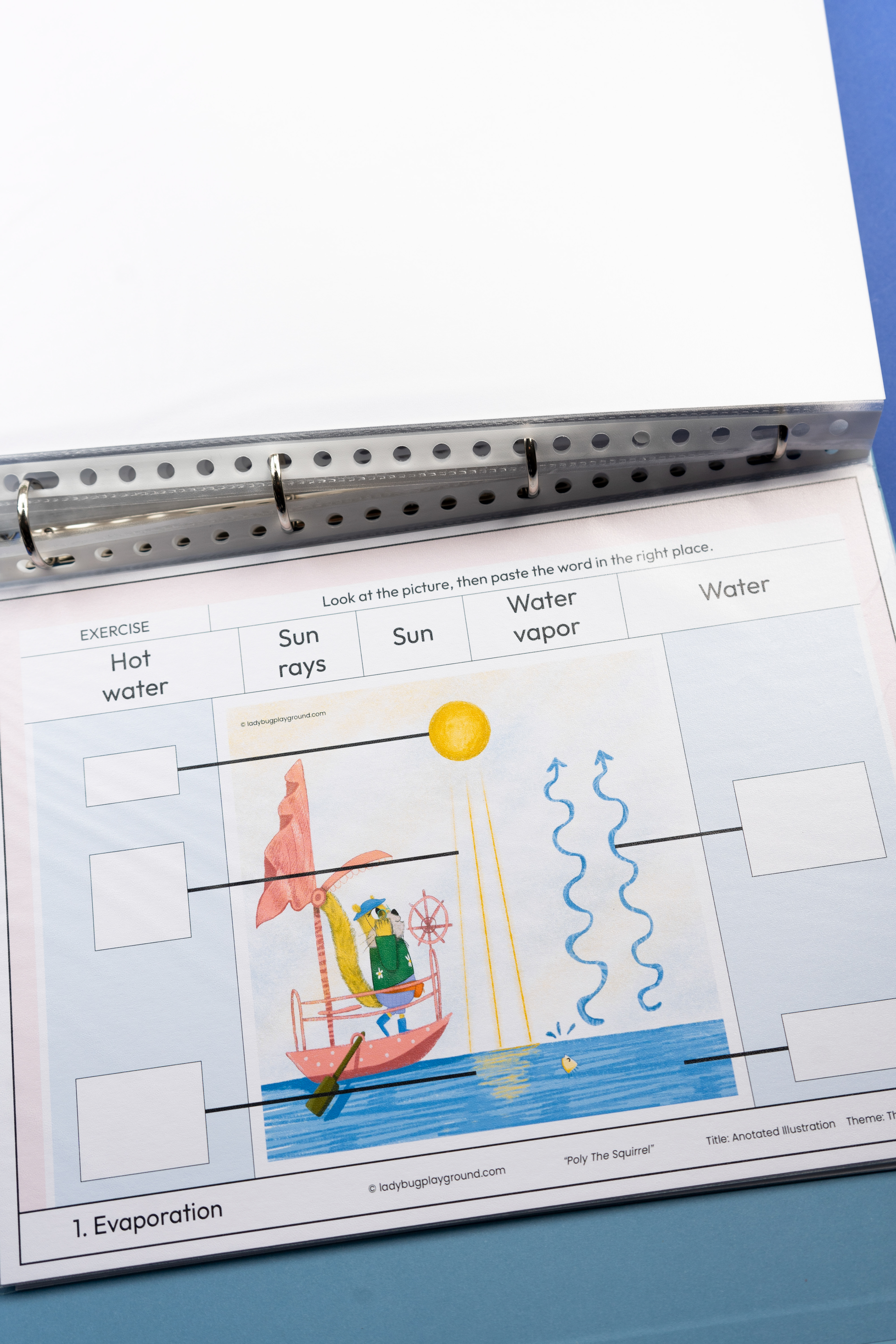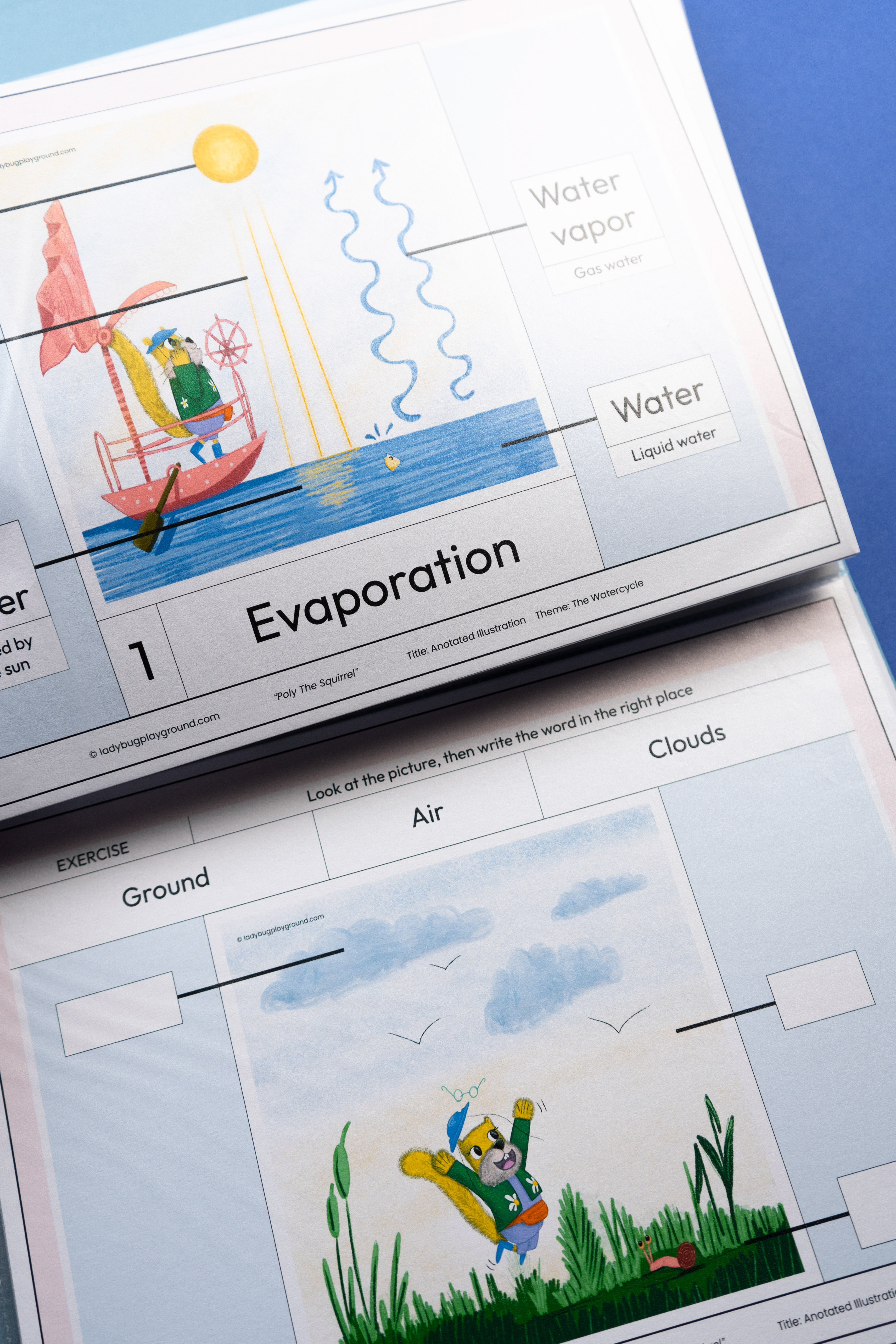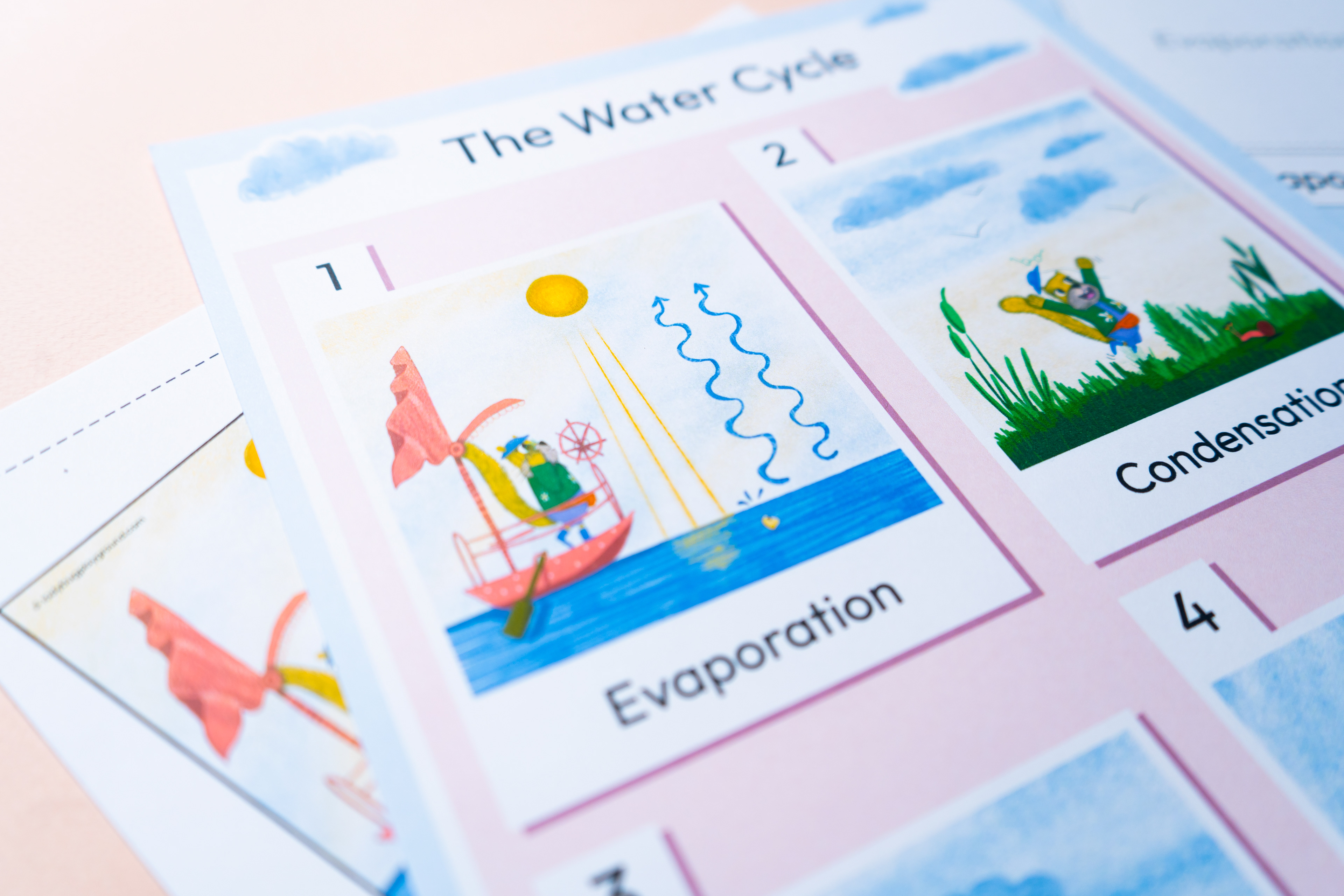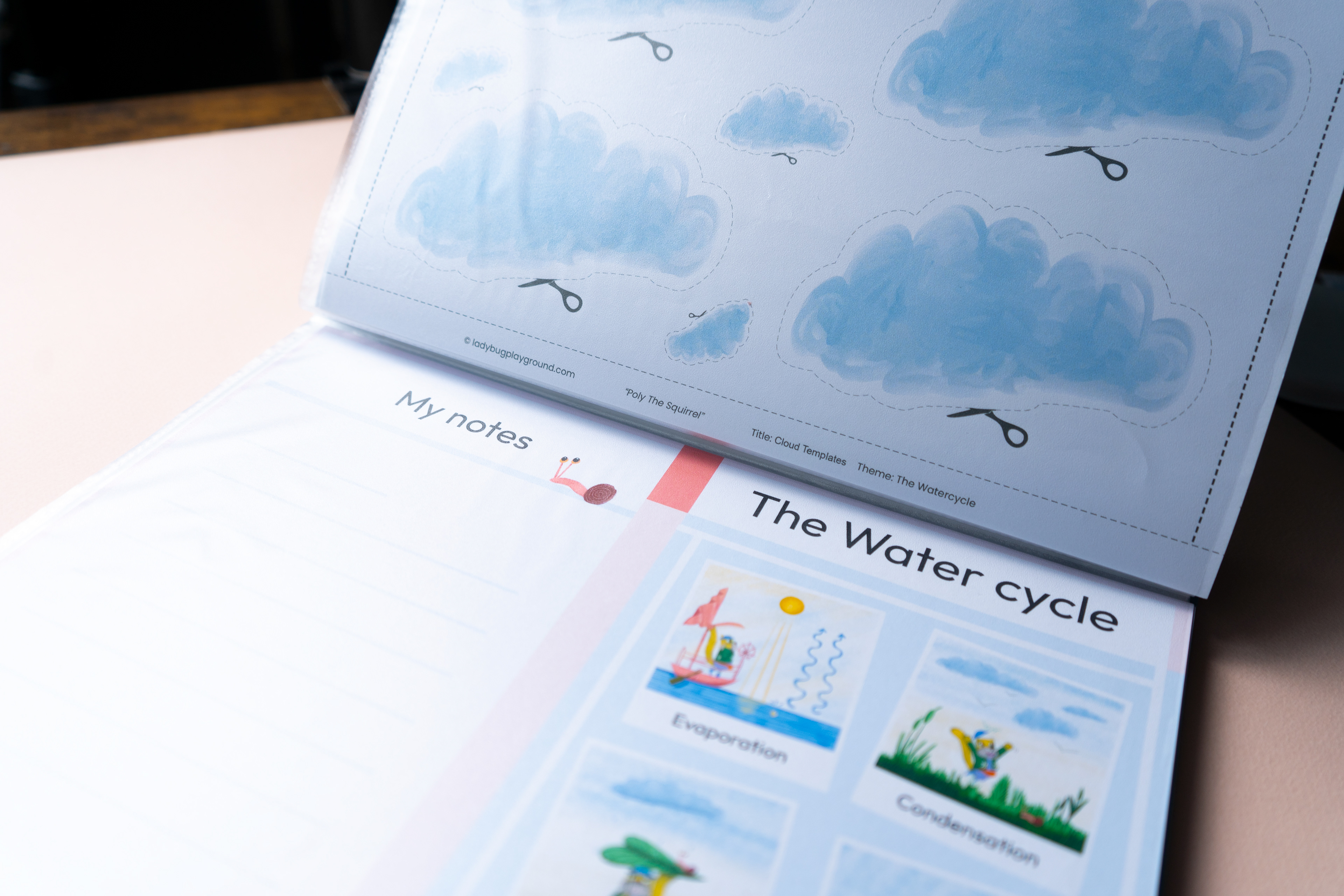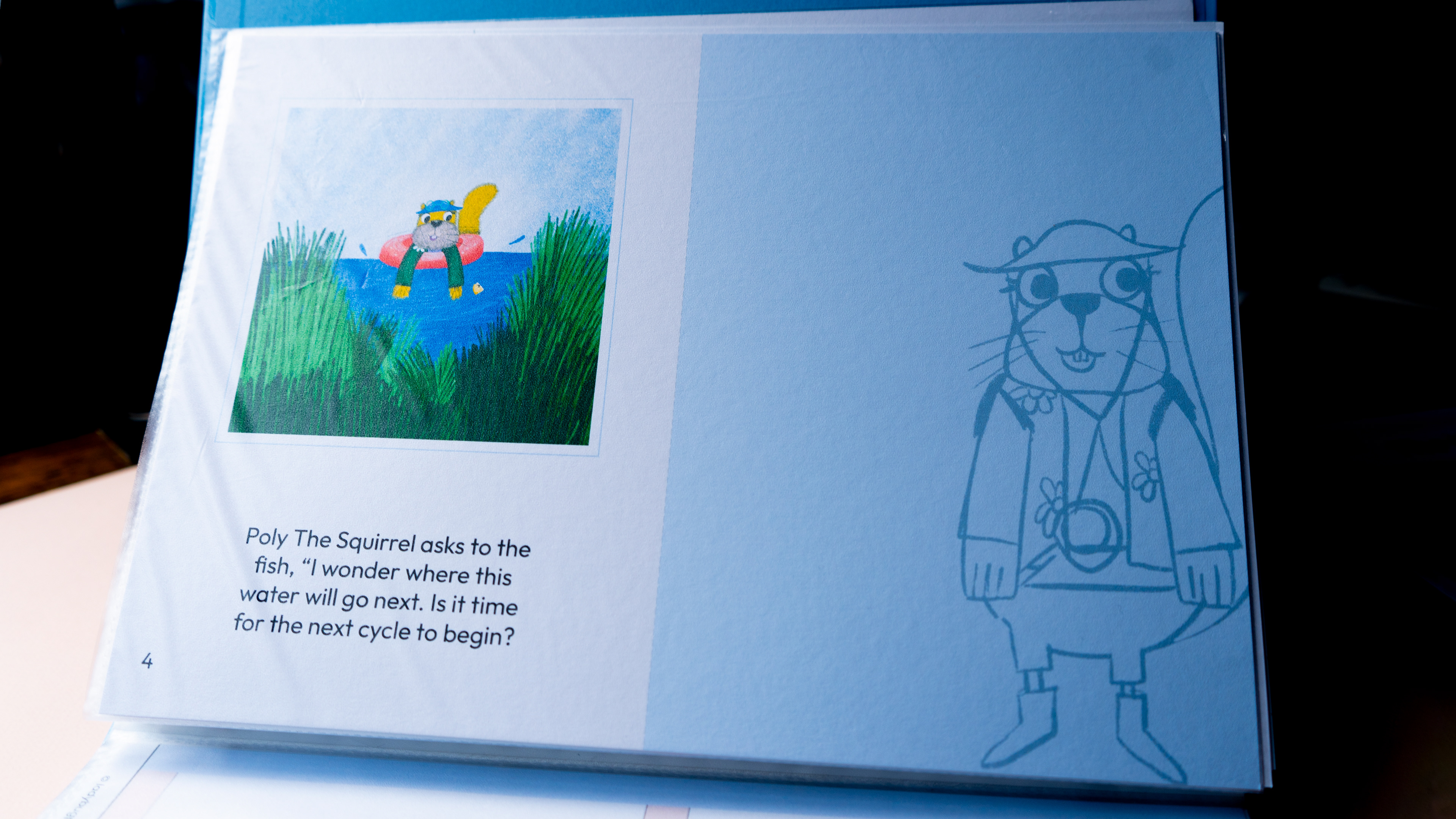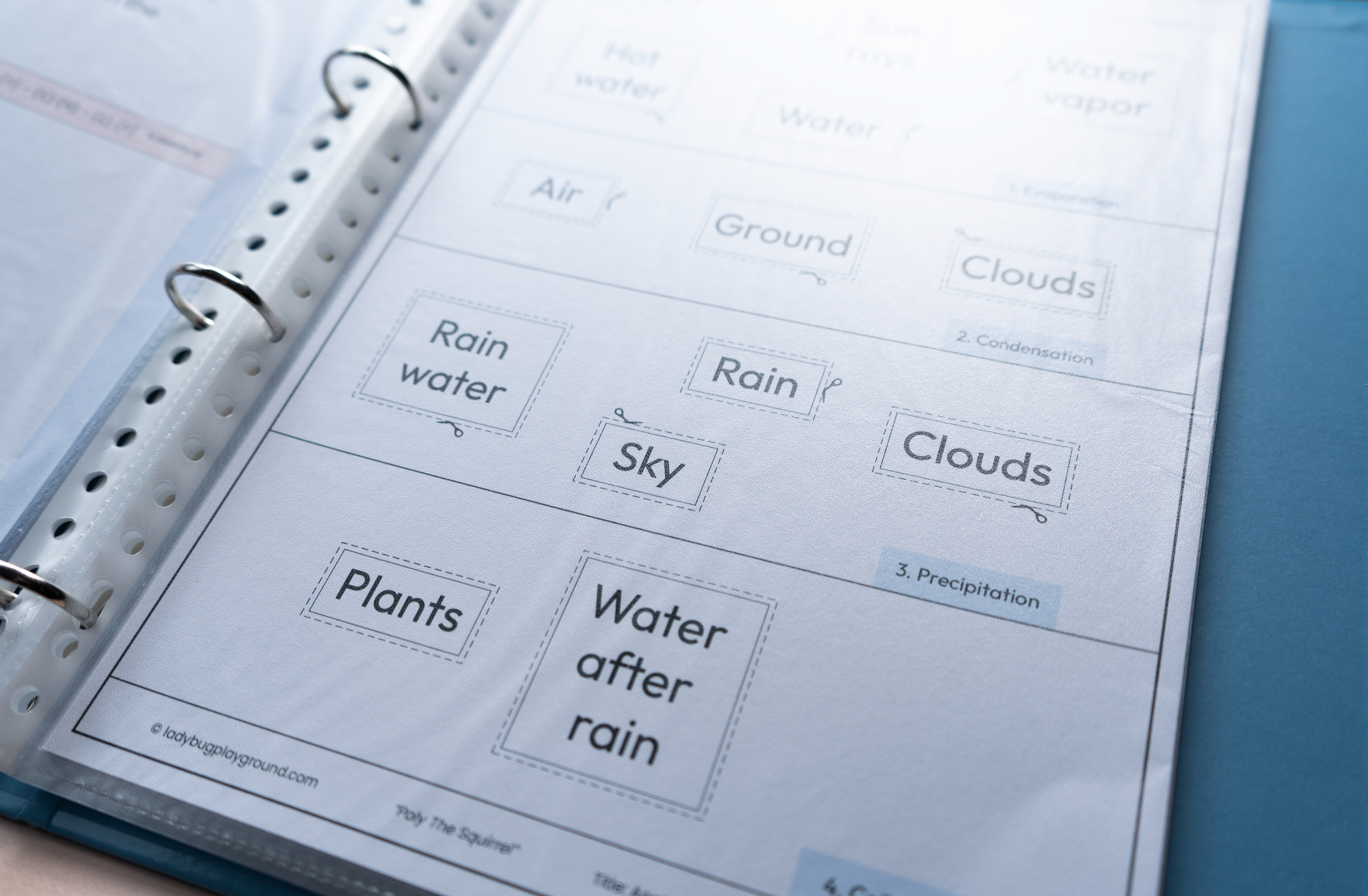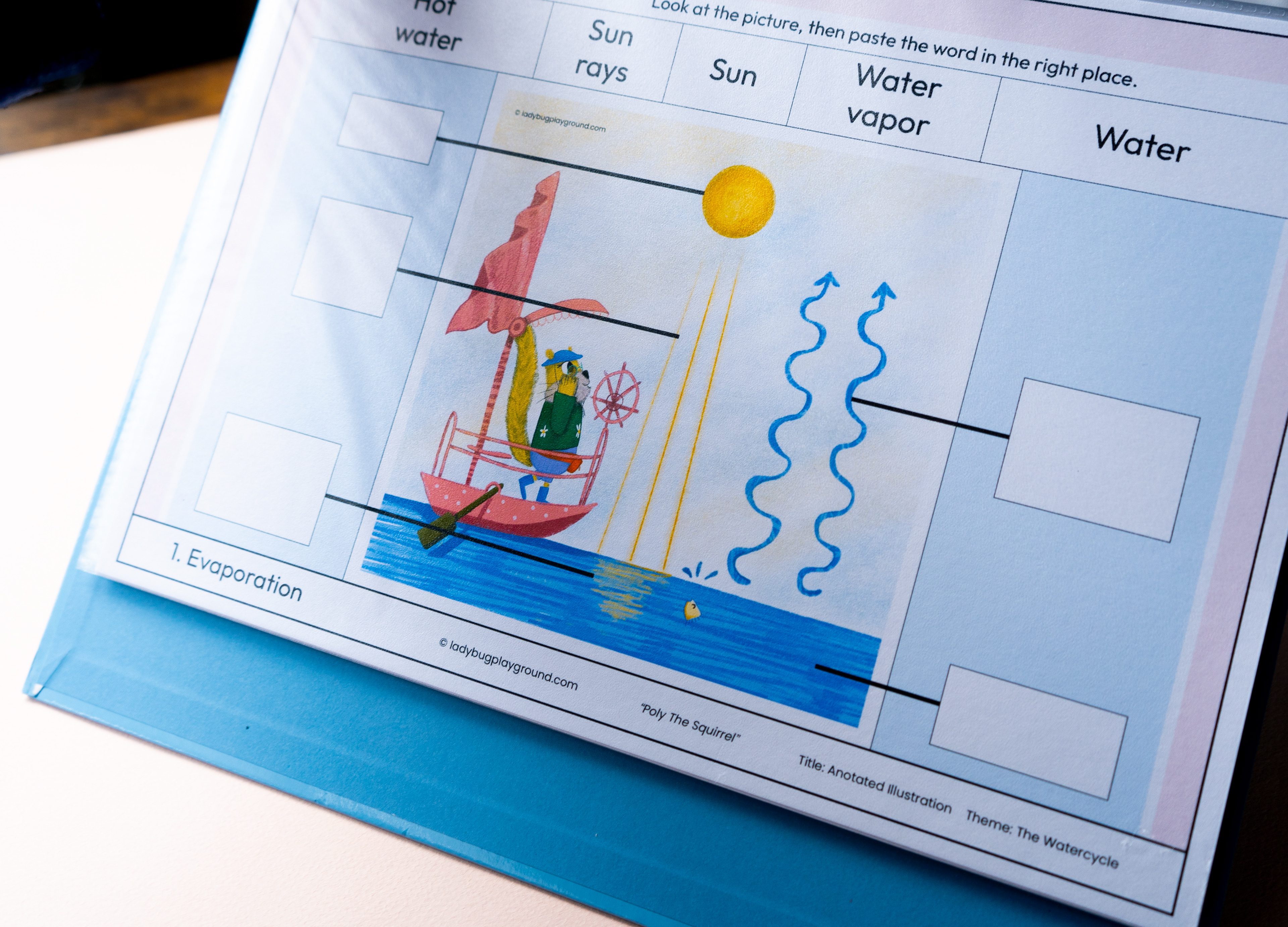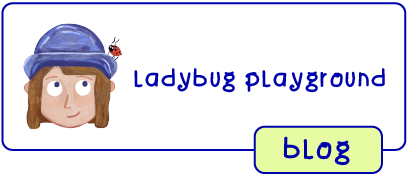Header photo - A kid having fun with water / © frank mckenna
Photo 1 - A woman holding a bag of water / © Anna Shvets
Photo 2 - Kid playing with a light / © pvproductions
What to do:
1) Station 1 - Evaporation: Fill a small cup with warm water to show how water heats up and turns into vapor (be sure it's not too hot for little hands—let them observe instead!).
4) Station 4 - Collection: Place a small bowl of tap water to represent lakes, rivers, or oceans where water gathers before evaporating again.
Photo 8 - Kids playing together / © cottonbro studio
Photo 4 - A kid making art / © Eren Li
Photo 5 - A kid playing in a puddle / © June Admiraal
Photo 6 - A kid sitting by the window / © shangarey
Photo 7 - A kid hanging up laundry / © pikisuperstar
Photo 8 - A steaming pot / © Gaelle Marcel
Photo 9 - A kid in the bathroom / © Keira Burton / Edited by Ladybug playground
